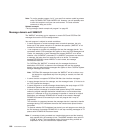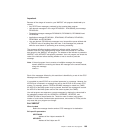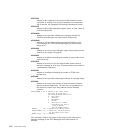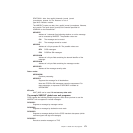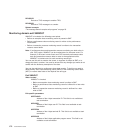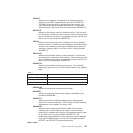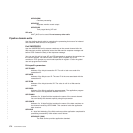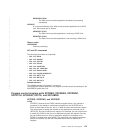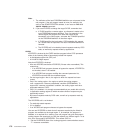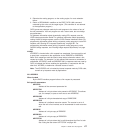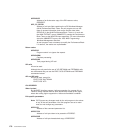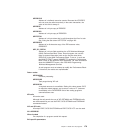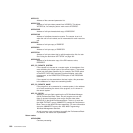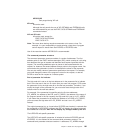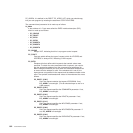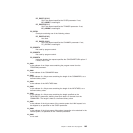Note:
1. The attributes of the local PROGRAM definition are not passed to the
exit program. If the exit program needs to know, for example, the
value of the REMOTESYSTEM attribute, it can issue an EXEC CICS
INQUIRE PROGRAM command.
2. If you use XPCREQ to change the target SYSID, remember that:
a. If SYSID specifies a remote region, no reference is made to the
local PROGRAM resource definition. Thus, for example, in the
remote region the program runs under the transid of the
transaction in the client region, not under the TRANSID specified
on the PROGRAM definition in the client region.
b. If SYSID specifies the local region, CICS treats the link request
as if SYSID was not specified. The local PROGRAM definition is
honored.
c. The XPCREQ exit is invoked by internal requests made by CICS
code, as well as by requests made by applications.
XPCERES
XPCERES is invoked by the EXEC interface program before CICS processes
either of the following kinds of dynamically-routed link request:
v A distributed program link (DPL) call
v A Link3270 bridge request
Note that XPCERES is invoked:
v After exit XPCREQ and before XPCREQC (if these exits are enabled). This
means that:
– If an XPCREQ exit program chooses to bypass the request, XPCERES is
not invoked, even if it is enabled.
– If an XPCREQ exit program modifies the command parameter list,
XPCERES must deal with the modified request.
v On the target region—that is, the region to which the request has been
routed.
v Only if the routing region—the region on which the routing program
runs—supports the “resource unavailable” condition (RESUNAVAIL). To
support the “resource unavailable” condition, the routing region must be a
supported release of CICS.
v Only if it is enabled. It is strongly recommended that you enable this exit only
in application-owning regions to which the above kinds of request may be
dynamically routed.
v By internal requests made by CICS code, as well as by requests made by
applications.
The XPCERES exit is not invoked:
v For statically-routed requests.
v If it is disabled.
v If an XPCREQ exit program chooses to bypass the request.
You can use XPCERES to check that all resources required by the linked-to
program are available on the target region. If, for example, the program is
disabled, or a required file is missing, your exit program can give the dynamic
routing program the opportunity to route the request to a different region. To do
this, set a return code of UERCRESU. This causes CICS to:
1. Set the DYRERROR field of the routing program’s communications area to
'F'—resource unavailable.
176 Customization Guide



